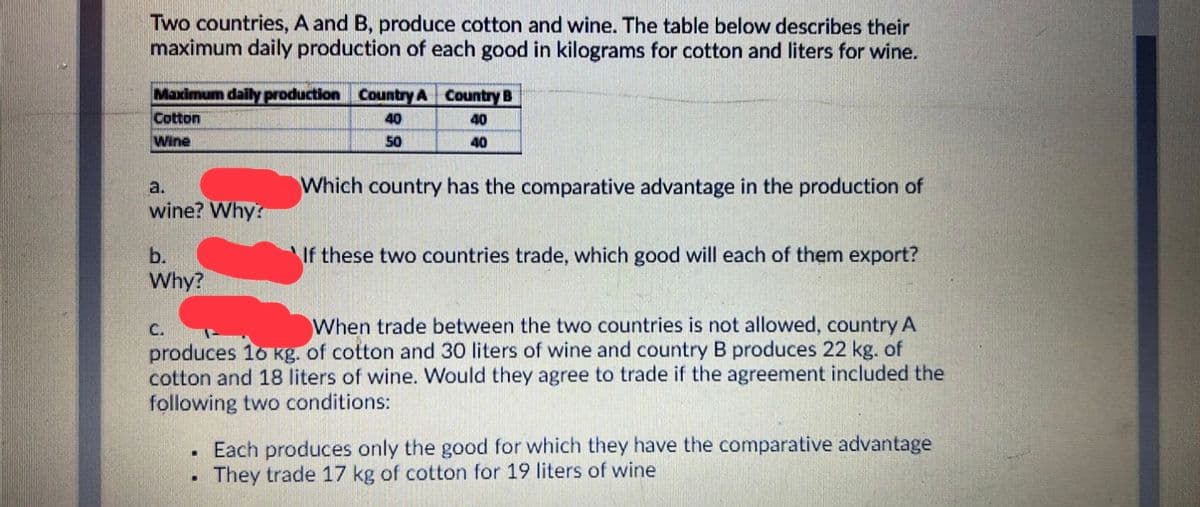Two countries, A and B, produce cotton and wine. The table below describes their maximum daily production of each good in kilograms for cotton and liters for wine. Maximum daily production Country A Country B Cotton 40 40 Wine 50 40 Which country has the comparative advantage in the production of a. wine? Why? b. If these two countries trade, which good will each of them export? Why? C. When trade between the two countries is not allowed, country A produces 16 Kg. of cotton and 30 liters of wine and country B produces 22 kg. of cotton and 18 liters of wine. Would they agree to trade if the agreement included the following two conditions: Each produces only the good for which they have the comparative advantage They trade 17 kg of cotton for 19 liters of wine

Answer:
Given,
| Maximum Daily production | Country A | Country B |
| Cotton | 40 | 40 |
| Wine | 50 | 40 |
(a). Let us first find the opportunity cost of both goods for both countries to find the comparative advantage:
The opportunity cost of cotton for country A: if country A produces 40 units of cotton it has to sacrifice the production of 50 units of wine.
The opportunity cost of wine for country A; if country A produces 50 units of wine then it has to sacrifice the production of 40 units of cotton.
The opportunity cost of cotton for country B: if country B produces 40 units of cotton it has to sacrifice the production of 40 units of wine.
The opportunity cost of wine for country B; if country B produces 40 units of wine then it has to sacrifice the production of 40 units of cotton.
Since the opportunity cost of producing cotton for country B is less, country B has a comparative advantage in the production of cotton.
Since the opportunity cost of producing wine for country A is less, country A has a comparative advantage in the production of wine.
Learn your way
Includes step-by-step video
Step by step
Solved in 3 steps









